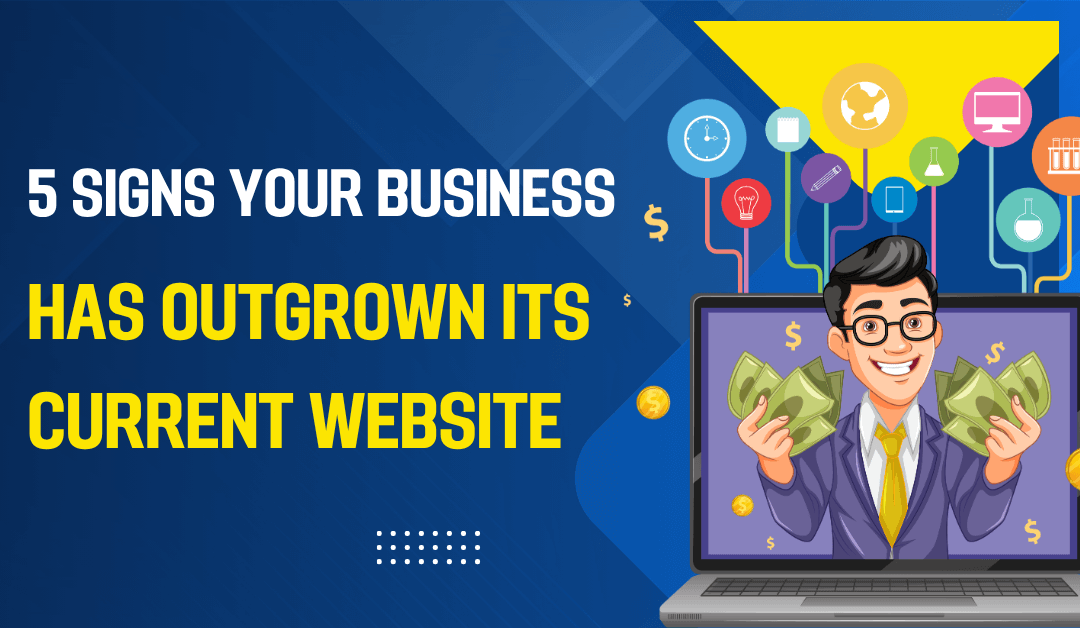Your website is the gateway to your business. It’s where first impressions are formed, relationships begin, and sales are made. But just as a growing family needs a bigger house, a thriving business will eventually need a more robust online presence.
The problem is, the signs that you’ve outgrown your website can be subtle. They creep in slowly, like quiet complaints from customers or a gradual decline in leads. Ignoring them means leaving money on the table and stunting your growth.
How can you tell if it’s time for a change? Look for these five clear signs.
1. It’s Slow, Clunky, and Frustrating to Use (For Everyone)
Think of the last time you tried to use a slow, unresponsive website. You probably clicked away in frustration. Your visitors are doing the same.
- Slow Loading Speeds: Pages that take more than a few seconds to load are a major red flag. Google prioritizes fast websites, and so do users. A slow site hurts your search rankings and drives potential customers away.
- Frequent Errors: Are you seeing 404 pages, broken links, or forms that don’t submit? Technical glitches signal an underlying infrastructure that can’t support your current traffic or functionality.
- Clunky Backend: If it takes you an hour to make a simple text change because the content management system (CMS) is confusing, your website is inefficient. A modern CMS should empower you, not hold you hostage.
The Bottom Line: A website should be a smooth, efficient engine for your business. If it’s a source of friction, it’s holding you back.
2. The Design Looks Dated and Doesn’t Reflect Your Current Brand
Your brand has evolved. Maybe you’ve refined your logo, updated your color scheme, or shifted your target audience. Does your website tell the same story?
An outdated design—think small images, cluttered layouts, and old-fashioned fonts—immediately erodes trust. It sends a subconscious message that your business is behind the times. If your brand is innovative and professional, but your website looks like it’s from 2012, there’s a dangerous disconnect.
Ask yourself: If a visitor lands on your site and then goes to a competitor’s, does yours look more credible and appealing? If the answer is “no,” it’s a strong sign you’ve outgrown the design.
3. It’s Not Mobile-Friendly (Or Just “Okay” on Mobile)
This is non-negotiable. The majority of web traffic now comes from mobile devices. If your website isn’t truly mobile-responsive, you are actively turning away customers.
A “mobile-friendly” site isn’t just one that shrinks to fit a screen. It should offer an intuitive, thumb-friendly experience with easy-to-tap buttons, readable text without zooming, and a layout that flows naturally on a small display. Google uses mobile-first indexing, meaning it primarily uses the mobile version of your site for ranking. A poor mobile experience directly hurts your visibility.
4. You’re Getting the Wrong Kind of Feedback (Or None at All)
Listen to what your customers and team are saying. The feedback can be very telling.
- From Customers: Comments like, “I couldn’t find your phone number,” or “The contact form was confusing,” are direct indicators of a poor user experience (UX).
- From Your Sales Team: If your sales team consistently hears, “Your website was hard to navigate,” it means the site is creating barriers instead of removing them.
- Silent Feedback (Analytics): A high bounce rate (people leaving after one page) and low pages-per-session are silent screams from your analytics dashboard that users aren’t engaging with your content.
5. You Can’t Do What You Need to Do
This is the most concrete sign of outgrowing your website. Your business goals have advanced, but your website’s capabilities haven’t. You might be facing limitations like:
- “I want to start selling online.” But your current site isn’t an e-commerce platform.
- “I need to blog regularly to attract customers.” But adding a new blog post is a technical nightmare.
- “I want to create a members-only area.” But the functionality simply doesn’t exist.
- “I need to integrate with my CRM and email marketing tool.” But the website isn’t built for modern integrations.
Your website should be a flexible tool that adapts to your strategy. If you’re constantly saying, “I wish my website could…,” it’s a sign that you need a new one that can.
Your Website Should Be a Growth Engine, Not an Anchor
Recognizing these signs is the first step toward unlocking your business’s full potential. A website redesign isn’t just an expense; it’s a strategic investment in your future growth. It’s about building a digital home that not only looks the part but also works tirelessly to convert visitors into loyal customers.
If two or more of these signs feel familiar, it’s time to start planning your website’s next chapter.

